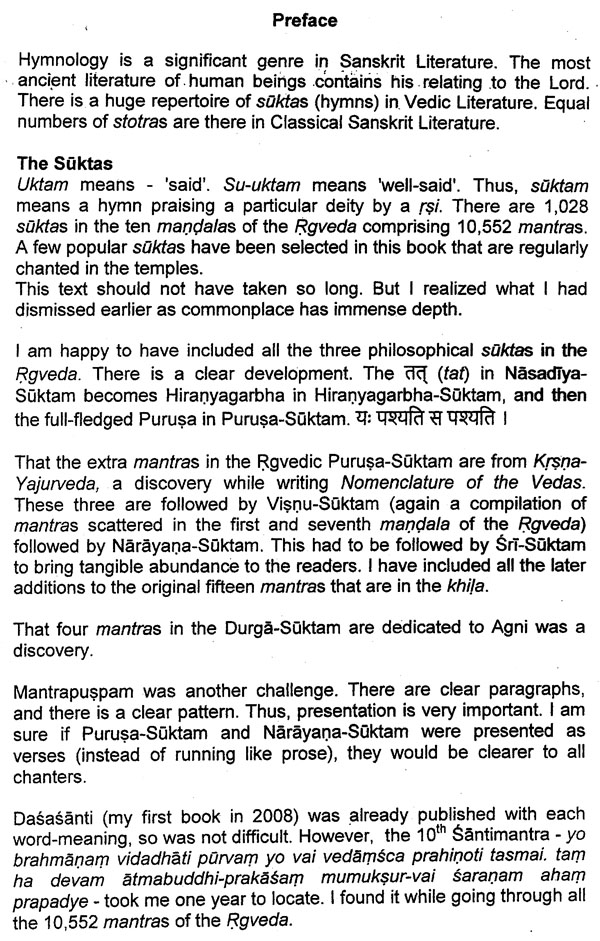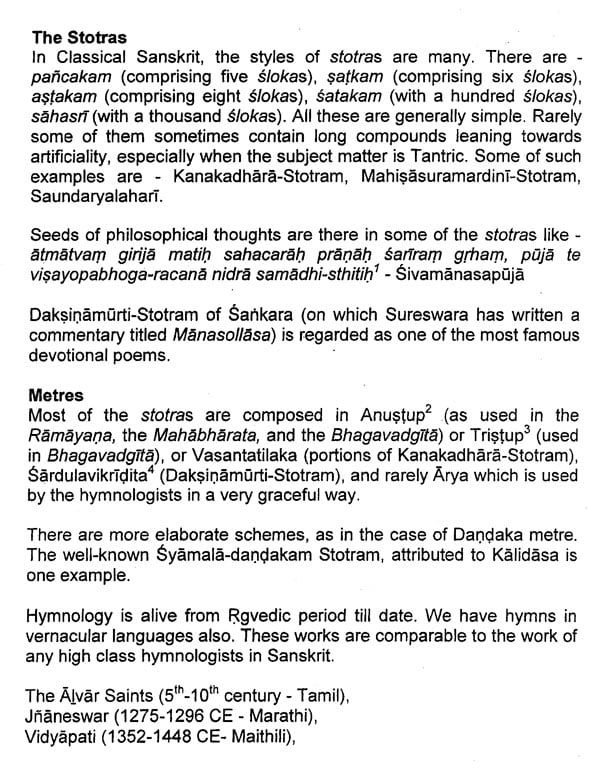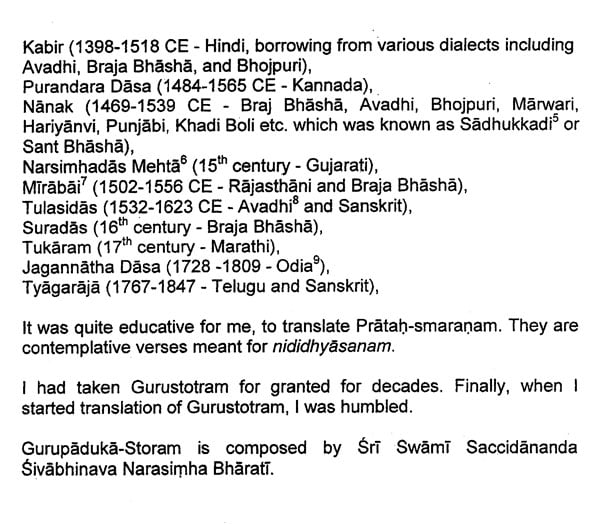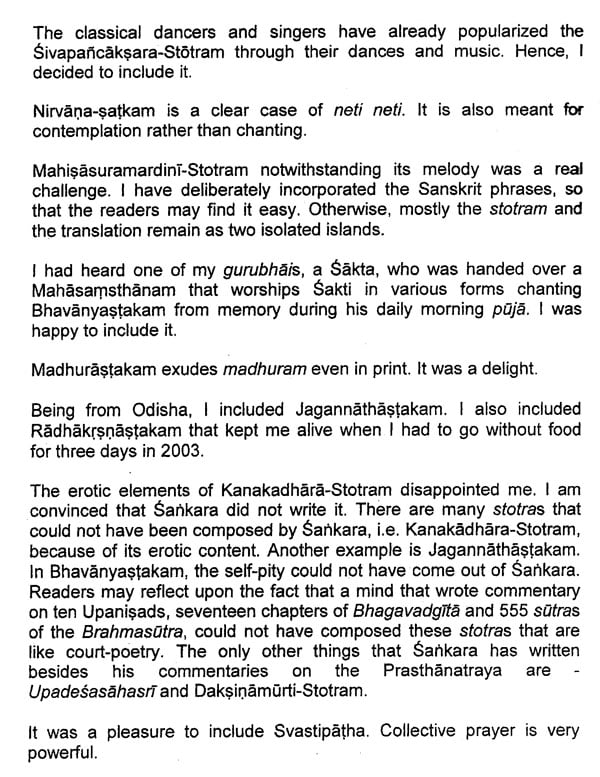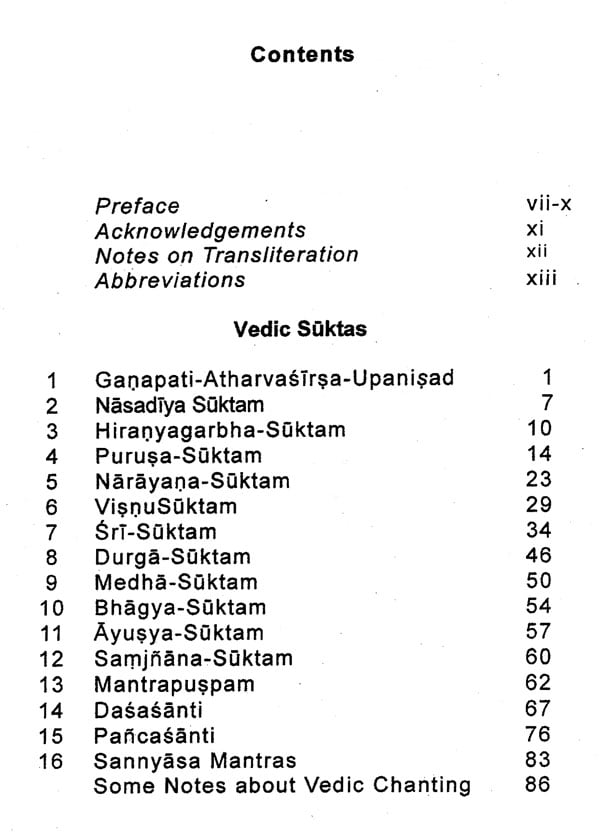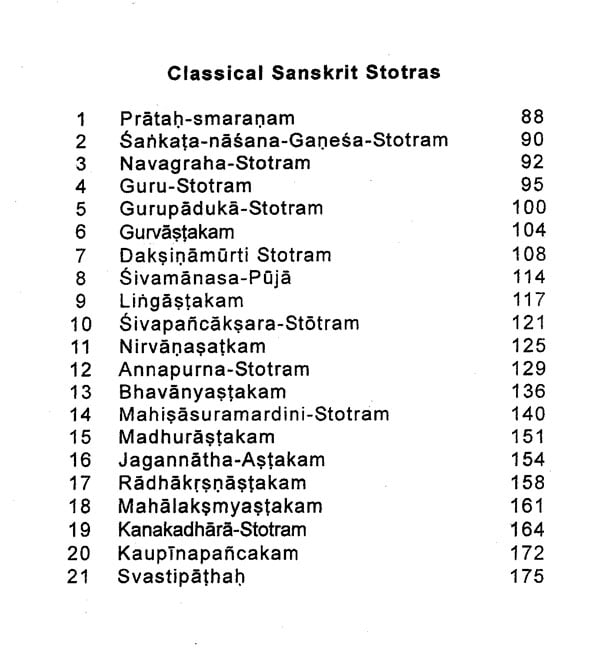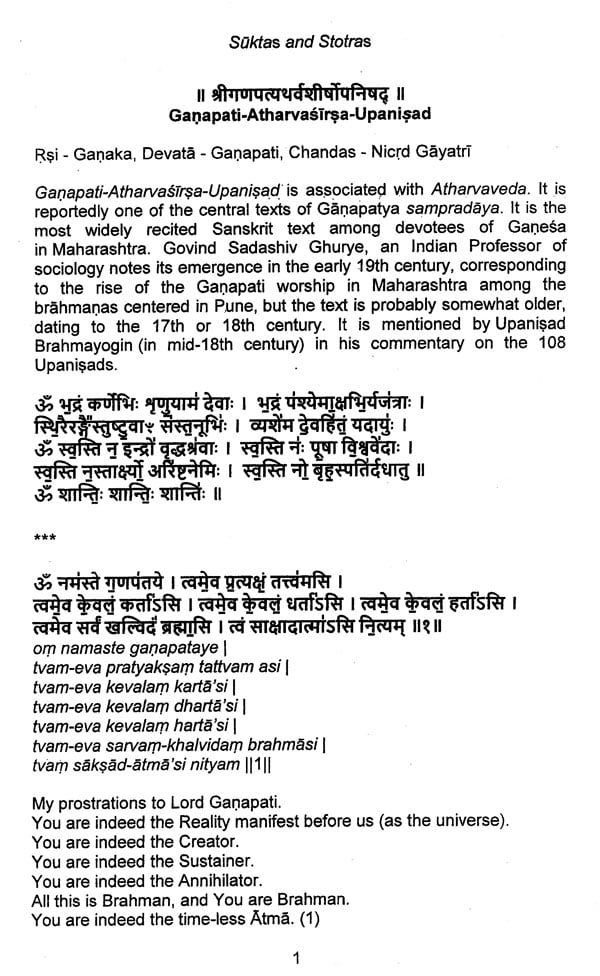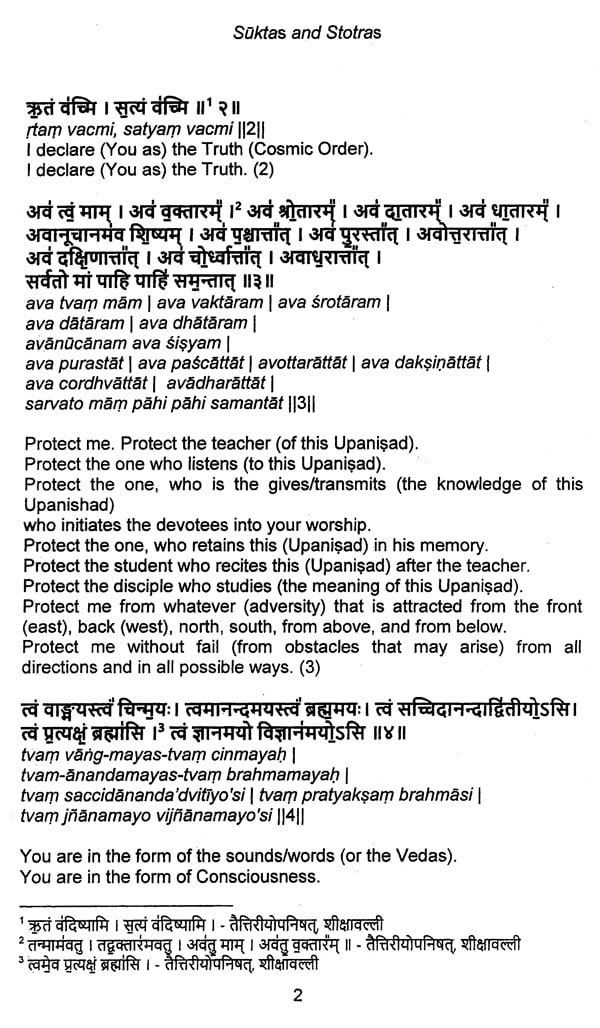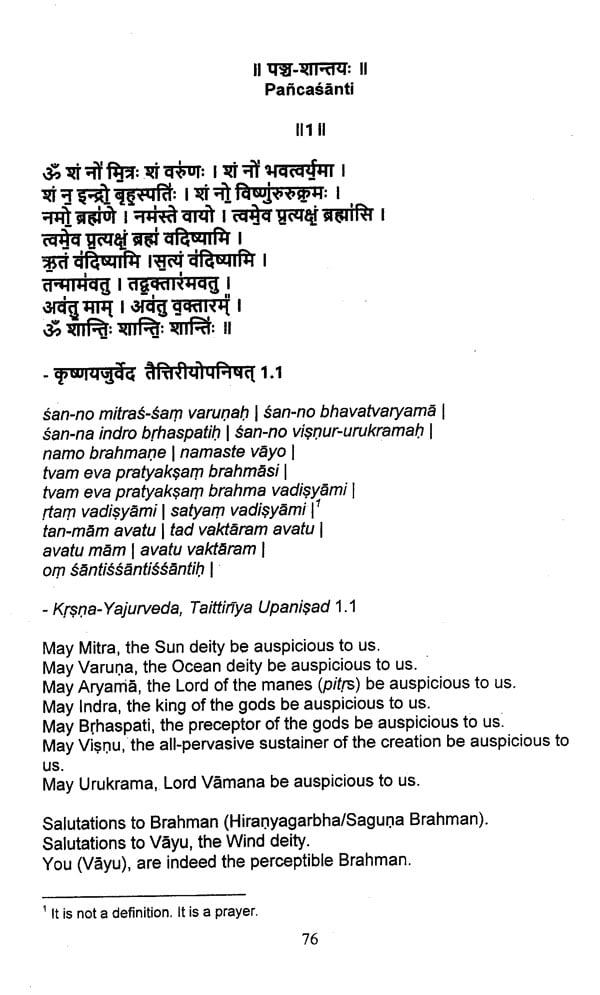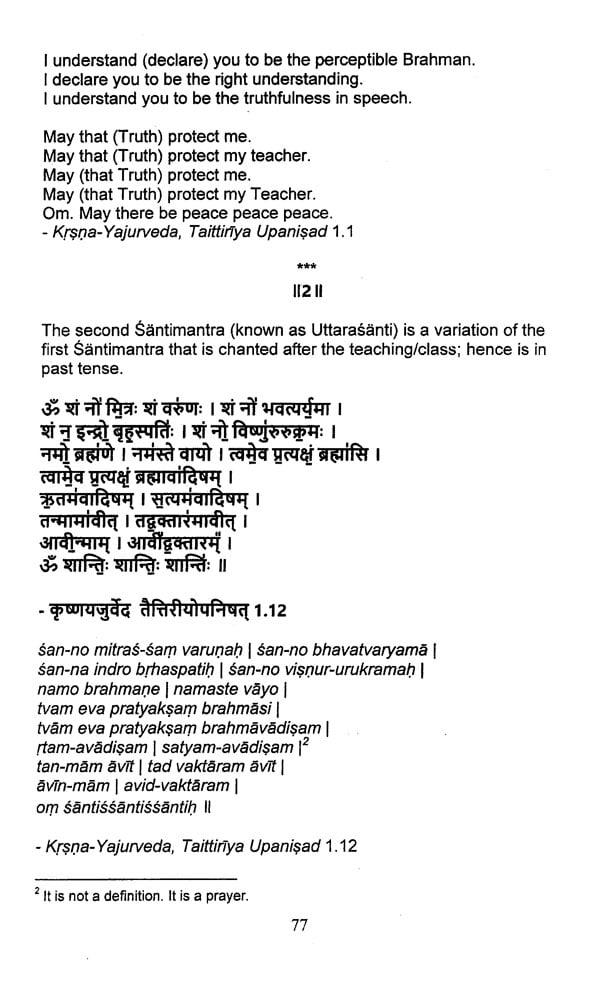
Suktas and Stotras (16 Popular Vedic Suktas and 21 Stotras in Devanagari with Roman Transliteration, English Translation, Elaborate Footnotes and Connections with other Suktas)
Book Specification
| Item Code: | NAZ444 |
| Author: | Atmaprajnananda Saraswati |
| Publisher: | Parimal Publication Pvt. Ltd. |
| Language: | English and Sanskrit |
| Edition: | 2021 |
| ISBN: | 9788171107223 |
| Pages: | 178 |
| Cover: | PAPERBACK |
| Other Details | 10.00 X 6.00 inch |
| Weight | 290 gm |
Book Description
Hymnology is a significant genre in Sanskrit Literature. The most ancient literature of human beings contains his relating to the Lord. .
There is a huge repertoire of sakfas (hymns) in Vedic Literature. Equal numbers of sfotras are there in Classical Sanskrit Literature. :
Uktam means - 'said'. Su-uktam means ‘well-said'. Thus, sdktam means a hymn praising a particular deity by a rsi. There are 1,028 siktas in the ten mandalas of the Rgveda comprising 10,552 mantras. A few popular sdktas have been selected in this book that are regularly chanted in the temples.
This text should not have taken so long. But I realized what | had dismissed earlier as commonplace has immense depth. I am happy to have included all the three philosophical sdktas in the Rgveda. There is a clear development. The dc (faf) in Nasadiya- Stiktam becomes Hiranyagarbha in Hiranyagarbha-Siktam, and then the full-fledged Purusa in Purusa-Sdktam. usaf & Uae That the extra mantras in the Rgvedic Purusa-Stktam are from Krsna- Yajurveda, a discovery while writing Nomenclature of the Vedas. These three are followed by Visnu-Siktam (again a compilaton of mantras scattered in the first and seventh mandala cf te cwece followed by Narayana-Siktam. This had to be followed Dy Saica to bring tangible abundance to the readers. I have included af the a additions to the original fifteen mantras that are in the khila That four mantras in the Durga-Siktam are dedicated to Agr was 2 discovery.
Mantrapuspam was another challenge. There are clear paragraphs. and there is a clear pattern. Thus, presentation is very important. I am sure if Purusa-Saktam and Narayana-Siktam were presented as verses (instead of running like prose), they would be clearer to all chanters.
Dasasanti (my first book in 2008) was already published with each word-meaning, so was not difficult. However, the 10" SAntimantra brahmanam vidadhati pairvam yo vai vedamsca prahinoti tasmai. tam ha devam atmabuddhi-prakasam mumuksur-vai Saranam aham prapadye - took me one year to locate. I found it while going through all the 10,552 mantras of the Rgveda.
In Classical Sanskrit, the styles of sfotras are many. There are - paficakam (comprising five Slokas), satkam (comprising six S/okas), astakam (comprising eight Slokas), Safakam (with a hundred S/okas), sahasri (with a thousand S/okas). All these are generally simple. Rarely some of them sometimes contain long compounds leaning towards artificiality, especially when the subject matter is Tantric. Some of such examples are - Kanakadhara-Stotram, Mahisasuramardini-Stotram, Saundaryalahari.
Seeds of philosophical thoughts are there in some of the sfotras like - atmatvam girifa matih sahacarah pranah Sariram grham, puja te visayopabhoga-racana nidra samadhi-sthitih’ - Sivamanasapija Daksinamarti-Stotram of Sankara (on which Sureswara has written a commentary titled Manasollasa) is regarded as one of the most famous devotional poems.
Most of the stotras are composed in Anustup* (as used in the Ramayana, the Mahabharata, and the Bhagavadgita) or Tristup" (used in Bhagavadgita), or Vasantatilaka (portions of Kanakadhara-Stotram), Sardulavikridita* (Daksinamiurti-Stotram), and rarely Arya which is used by the hymnologists in a very graceful way. There are more elaborate schemes, as in the case of Dandaka metre. The well-known Syamala-dandakam Stotram, attributed to Kalidasa is one example.
Hymnology is alive from Rgvedic period till date. We have hymns in vernacular languages also. These works are comparable to the work of any high class hymnologists in Sanskrit.
Book's Contents and Sample Pages
